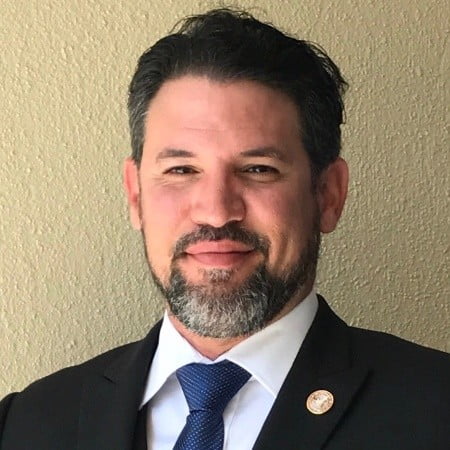Opiate Usage in the United States
Over 1,250,000 people are estimated to have used heroin before the age of 18. Deaths from drug overdoses in the United States in 2014 numbered 47,055, over 10,000 of those from heroin alone. An estimated 13.5 million people in the world take opioids, including 9.2 million who use heroin. It is very clear that the world we live in today is faced with a serious problem, with no apparent remedy in sight.
With advances in technology and all the knowledge that has come with it, has come the scientific evidence that addiction is a disease of the brain. Just like any other disease, the medical research field has introduced medications and treatments in order to help those who are addicted.
Methadone, Buprenorphine, and Naltrexone are the most commonly used prescription drugs used to help people with their addiction. They each have different effects, but ultimately work toward the same goal; to help people find and stay in recovery.
Introducing Pharmaceutical Treatments
Methadone is most commonly used to treat people with a Heroin addiction, and it is a slow-acting opioid agonist. Agonists activate the opioid receptors in the brain, but without the high that comes with Heroin abuse, thus reducing the need for someone to engage in drug seeking behavior, according to researchers.
Another popular drug used in treatment is Buprenorphine, a partial opioid agonist. Like Methadone, it also activates the opioid receptors in the brain, but to a lesser degree.
Naltrexone is an antagonist, and completely blocks the opioid receptors, meaning that even if a person were to use drugs while taking naltrexone, they wouldn’t get high, making it a seemingly ideal source of relapse prevention. More research is being done every day.
A drug called Probuphine, a drug similar in makeup to Buprenorphine, has just recently been approved by the FDA for use in addiction treatment. Instead of an orally taken medicine it is an implant about the size of a matchstick injected under the skin that administers medicine for about 6 months. The goal with this new drug is to eliminate the need to have to take a pill every day and reduce the risk of abusing or forgetting to take the medicine.
A Heroin vaccine, being researched by the Scripps Research Institute, is in clinical trials, and is intended to have the same effect as Naltrexone, but in the form of a shot instead of a pill or liquid.
What is MAT?
Medication Assisted Treatment, or MAT, where a patient takes one of the above mentioned medication to help treat their addiction, is a hot topic today in the world of substance abuse treatment. Many claim that staying on any of the prescribed medicine after detox only switches the addiction from one substance to another, while many others claim that while they may develop a physical dependency on the medicine, it is not an addiction, but rather a helpmeet for addicts to get clean.
Those who are against giving people medicine past the detox stage claim that being on Methadone or Buprenorphine doesn’t count as being clean or sober, as the medications can act as a substitute for whatever drugs they were taking before. They also disagree that the medications help people to alter their behavior, a common argument used in favor of MAT. Presenting people with the medicine may remove the need to go out and seek it on the streets, but that the obsession still remains, and thus they are not really living a clean and sober lifestyle.
There is also some debate in regard specifically to using Methadone for treatment.
The Argument Surrounding Methadone
Even with Methadone being legally available for treatment, there are many who start to abuse it for recreational uses and overdose. The death toll for people who died from Methadone in the year 2001 was equal to the number of deaths from it spanning an entire decade before, from 1990 to 1999.
This leads to an argument in favor of those who are for tapering off the medicine rather than using it as a form of long-term treatment. Methadone as a drug stays in the body’s system longer than Heroin, and as a result, takes longer to detox from. There have also been reports from people who have detoxed from both Heroin and Methadone that have claimed the withdrawals from coming off Methadone were much worse and much longer than coming off Heroin.
Inland Detox, a detox facility located in California that does not offer Methadone as an option for addiction treatment, believes that those who were using Heroin and prescription pain pills in the past and are now on Methadone “would not only benefit from detoxing from Methadone completely, but actually prefer to live life without the use of a substitute for Heroin or prescription pain medications.”
Inland Detox brings up two dangers they see with Methadone use. 1. That it has a fast onset of physical and psychological addiction for the patient, and 2. The severe withdrawal symptoms that come from stopping usage of Methadone.
A Better Today Recovery Services, located in Scottsdale AZ, is another facility that uses medical detox, but does not prescribe Methadone or Suboxone after that first step of treatment. They believe in offering therapy and behavioral programs, employing full-time staff in order to ensure its clients get the best, most consistent treatment available. They believe that by offering a medical detox followed by a program that allows the person to heal physically, emotionally, and spiritually, its patients will have the best chance at finding and staying in recovery.
An Expert’s Views on MAT
Dan Cain, the President of a Minneapolis-based agency that runs treatment programs, halfway houses, and a drug testing lab, is very much against MAT past the detox stage of one’s treatment. In a paper published in 2013, he explains his many reasons against Methadone and Suboxone as the only treatment for addiction.
He claims that researchers who research Methadone leave out the views and conclusions of those who treat the addicted in abstinence only treatment programs, and have largely ignored the voices of the addicted who have been or are currently on Methadone with regard to the dangerous side effects it presents. By doing so, they have presented very one-sided evidence in favor of MAT. He claims addiction treatment in general is not one size fits all, and is against presenting anything as such.
“My experience over the past 41 years has been that many long-term patients, those who have been prescribed the drug for decades with no plan to get off, experience a loss of hope. And treatment, if about nothing else, should be about hope.”-Dan Cain said.
Those who have been on Methadone have stated side effects such as loss of focus, arthritis, tooth decay, labored breathing, high blood pressure, pallid skin, liver damage, and reduced energy and motivation. These side effects are not to be taken lightly, and according to him, are not written on the medicine nor explained to patients prior to taking them. And it doesn’t help that many of the physicians prescribing it are not well-versed in addiction and how it affects the brain.
Dan Cain also goes on to explain that addiction is not in the drugs themselves, but in changing the way one feels. The drugs just happen to give those looking to escape what they are searching for. Drugs like Methadone and Suboxone don’t have any effect in stopping the high you can get from substances such as Marijuana, Alcohol, Methamphetamine, or Benzodiazepines, patients can still get high and remain in the drug scene even while on these medications.
He goes on to explain that people tend to prefer the path of least resistance, and that is especially true for addicts. Methadone and Suboxone may sound like miracle drugs to them, and can offer minimal amount of work if they are not pushed to also go into a program or enroll in therapy. Dan Cain states that the abstinence based route of drug treatment causes deep self-reflection and true change in a person in order to get beyond the point of obsession and live a clean, sober life.
Dan Cain also says that addicts are very willing to believe what they are told in terms of what they can and can’t do. Giving them limitations will only serve to make them believe that about themselves, and whereas not everyone will believe the good when told about their abilities rather than limitations, he claims that those who do take it in stride tend to have better success than those who don’t.
Another point he makes is that addicts can get a sort of claim to status just by virtue of being addicts. They tend to view themselves differently than society does. They see themselves as being misunderstood, and as such, find no reason to have to change themselves.
“There is a level of belonging and camaraderie that results in people encapsulating themselves with people who support their addiction, and also makes them afraid that ‘normal’ people will not accept them.”
He feels that treatment programs need to focus on rebuilding prosocial behaviors and promoting a positive environment in order to be more successful.
Being in an environment with others who have had similar life experiences, for example treatment centers or group therapy sessions, can help to foster more positive and close-knit relationships. Dan Cain believes that by giving addicts medication beyond the detox stage, you are taking away this important aspect of treatment.
Despite all his points against Methadone treatment, however, he is not against using it at all, just sparingly. He believes that it can be helpful in conjunction with therapy or a program, or for those who had tried and failed the abstinence model of treatment.
The Argument for MAT
On the other side of the debate aisle, we have the argument for Methadone treatment for as long as one feels they need it, even if that means for life. Those who are for MAT state that taking medications along with going to therapy and meetings can help people stay sober for longer and greatly reduce the risk of relapse. Through medicines that either activate or block the receptors in the brain responsible for the high, and having medical professionals monitor the dosage until it is just right, a person is better able to focus on the therapy aspect of their treatment.
One researcher in favor of Methadone as long-term treatment is Dr. Mary Jeanne Kreek, the senior attending physician of the Laboratory of Biology of Addictive Diseases at Rockefeller University in New York City. She has been researching how addiction affects the brain for decades, and is well known for her work in developing the Methadone maintenance therapy for Heroin addiction in the 1960’s.
“It’s time for everyone to wake up and accept that abstinence-based treatment only works in under 10 percent of opiate addicts,” Kreek said.
“All proper prospective studies have shown that more than 90 percent of opiate addicts in abstinence-based treatment return to opiate abuse within one year.”
She goes on to state that “The brain changes, and it doesn’t recover when you just stop the drug because the brain has been actually changed. The brain may get OK with time in some persons. But it’s hard to find a person who has completely normal brain function after a long cycle of opiate addiction, not without specific medication treatment.”
Those for MAT make a point to state that addiction is a disease of the brain, and like many diseases, requires some sort of medication to help manage it. They also point out that different drugs have different effects on the brain, and that what may work for an alcoholic may not necessarily work for someone addicted to opiates or Cocaine.
One of the main points of the case for it is that it gives the addicted person the chance to get away from their obsession long enough to focus on the other aspects of their treatment, such as therapy and the 12-steps. Methadone and Suboxone, and other medications used in MAT, have been approved by the FDA for use in treating addiction, yet so many still aren’t aware that they have a choice beyond an abstinence based program, or even in conjunction with it.
Treating Addiction through MAT
Experts for MAT also like to distinguish the difference between physical dependence and addiction, especially in terms of Methadone. Methadone helps control symptoms of withdrawal and cravings for the addicts’ choice of drugs. Being able to focus on something other than chasing a daily high and being contributing members of society shows that the medication is truly helpful in being able to help those addicted stop their previously normal drug-seeking behavior.
They also make the argument for those who stay on Methadone for years, comparing it to treatment methods of diabetes and cancer. An article on shatterproof.org states in the case for MAT “If you began treatment for cancer and it was showing a reduction in tumors, would you then stop?” Of course, there are those who have gone off Methadone and Suboxone successfully, and continue to live happy, clean lives.
Dr. David Suetholz, the Kenton county coroner, has investigated several deaths caused by Heroin overdoses in his career. He says that out of all his clients using Suboxone, none have died from an overdose on it, and that the dropout rate of those on Suboxone is significantly less than those not on any medication.
It is also extremely difficult to get a prescription for Suboxone or Methadone. There are many roadblocks that doctors and patients have to overcome before being able to get the medicine, and many others who never see it before overdosing or ending up in jail on drug charges. If these medications can keep people off the street, stop them from using illegal drugs, and help them focus on their therapy and possible co-occurring disorders, experts argue, then why are so many people against using it?
They view these medicines as a tool, just like therapy or the 12-step program, in helping people piece their life back together after addiction.
In a Huffington Post article published in January 2015, it states that “A 2012 study conducted by the National Center on Addiction and Substance Abuse at Columbia University concluded that the U.S. treatment system is in need of a ‘significant overhaul’ and questioned whether the country’s ‘low levels of care that addiction patients usually do receive constitutes a form of medical malpractice.’”
SMC recovery LLC, located in Scottsdale AZ, treats opiate addiction specifically, and uses Methadone as well as professional counseling to treat its patients. It operates on evidence based models, combing the spiritual aspect of the 12-step program with the more scientific aspect of Methadone. It is a facility that believes in offering every method possible to help its patients find the best model of treatment for each individual.
The Real Problem with Addiction Treatment
It’s interesting to see the debate between experts on the topic of Medication Assisted Treatment. Those who are against it claiming that it’s not really living a clean life versus those who are for MAT claiming that it has been scientifically proven to help treat addiction may be on opposite sides of the issue, but they are united in one common cause; to find the best way to treat those who suffer from an addiction that has taken over their lives.
There are many who are in the middle in terms of this topic, claiming that whatever works for you as an individual is best, no matter what method of treatment they themselves use.
There are many others, however, who view their way as the only way to truly live a clean, sober life. The question then becomes, of course, what is the true definition of living clean? Is it being off any and all mind altering chemicals completely, or is it simply not obsessing and being dependent on the object of one’s addiction, no matter the method of how they got there?
Science and personal experience have shown the positive and negative aspects for both sides of the MAT debate. With so much information and differing opinions from those we deem as experts in the field of drug treatment, what are we to believe? Or are we to simply fumble around until we find the method that works best for us? And what of those who never find that “miracle” treatment?
It is time that we as a society come together and answer these and many more questions about addiction treatment, before we senselessly lose any more of our brothers, sisters, parents, friends, or children to this terrible disease.








